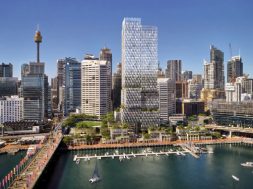For the first time in history, the prestigious Indian Architectural and Design festival (IADF) 2011 is being held in Mumbai on 15-16 September. Extensively supported by the Council of Architecture, the two day conference is to cover a broad spectrum of issues related to architecture and expected to see the attendance of 650 delegates comprising of architects & urban planners, interior designers, builder & developers, airport & metro authorities, consulting engineers and government agencies.
Many noted Architects and Eminent speakers related to the Architecture and Building fraternity will speak on different topics that include ‘Envisioning The Future of Architecture: Building Design & Construction in the New Millennium’, ‘Governance: Obligation and Opportunity for Architects’, ‘Managing Explosive Urban Growth’, ‘Living Spatial Transformations’, ‘Integration of Energy and Environmental issues into architectural designs’, ‘Trends in Lighting Architecture’, ‘Framing India’s Urban agenda- Why India needs Compact High Density Cities’, ‘Infrastructure Challenges in Urban Renewal of Indian Metros’, ‘Key Determinants that Guide Master Planning in India, ‘Initiatives of Urban Renewal in India’, Sustained Approach to Building Infrastructure in India’.
The 2011 Indian Architectural & Design Festival thematic exhibition will be an added attraction and it will be based on the theme of ‘Transformations’. The theme will relate to the way in which the built environment can be transformed by a combination of client commitment, architectural imagination, technological development and professional teamwork. IADF 2011 National Conference will provide with all the information, insight and details to capitalise on the newest trends in this increasingly institutionalised sector.
Case Studies from across the country will illustrate different aspects of transformation including ‘Creative re-use and adaptation of single buildings and/or groups of buildings’, ‘Regeneration of declining places and spaces within cities’, ‘ Technology transfer where lessons from other fields are applied to the built environment’, ’ Climate – change initiatives to protect or enhance existing environments’, ‘Social change represented in new buildings and places’ and ‘Economic growth and change helped by creative architecture and planning’.
Cookie Consent
We use cookies to personalize your experience. By continuing to visit this website you agree to our Terms & Conditions, Privacy Policy and Cookie Policy.









